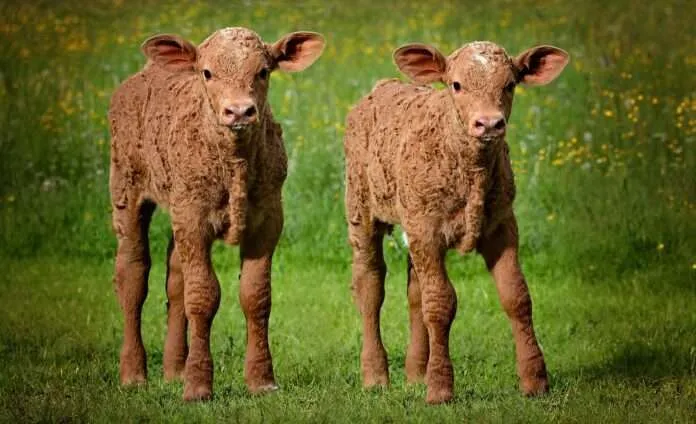K-State beef cattle expert describes signs of illness
MANHATTAN, Kan. — The smell of rubbing alcohol in a physician’s office is a sign of a hygienic environment. Just as medical personnel work to maintain a sanitary exam room for their patients, those cleanliness principles also apply on the farm, said Kansas State University Beef Cattle Institute veterinarian Brian Lubbers on a recent Cattle Chat podcast.
“When calves are born in an environment that is dirty, it can lead to the development of navel ill and joint ill, which are bacterial infections,” Lubbers said.
He added that navel ill happens when the bacteria enter the calf’s body through the navel, which was recently detached from the dam’s placenta; joint ill occurs in the bloodstream and can afflict the calf in one or many joints in its body.
“Signs of navel ill include an abscess on the outside of the body at the navel, but also it can be internal if the bacteria traveled up the vein from the navel to the liver,” Lubbers said. “With joint ill, the calves have swollen joints that are warm to the touch and (the calf) can appear lame because it is painful for them to walk.”
Lubbers said navel ill typically appears within the first 1-2 days of life, and the timing of joint ill symptoms appear within the first 1-2 weeks. Once the navel closes and the umbilical cord drops away from the body, the calf is no longer at risk of bacteria entering through that opening.
“If a producer suspects navel ill or joint ill happening in the calves, they should consult a veterinarian to see if the best treatment option is to drain the abscess or treat the calf with antibiotics,” Lubbers said.
He said management practices should be evaluated in herds where many calves are experiencing these illnesses.
“If producers are seeing a lot of calves with navel and joint ill, it is often happening because the calves are being exposed to the same bacteria in a dirty environment,” Lubbers said. “If cows calve in the same stall, make sure the bedding is changed out with each birth.”
To hear the full discussion, listen to the Cattle Chat podcast online.
-30-
FOR PRINT PUBLICATIONS: Links used in this story BCI Cattle Chat podcast, https://ksubci.org/2022/02/04/minimizing-hay-waste-balancing-act-overseeding-legumes-joint-and-navel-ill/
K State Research and Extension is a short name for the Kansas State University Agricultural Experiment Station and Cooperative Extension Service, a program designed to generate and distribute useful knowledge for the well being of Kansans. Supported by county, state, federal and private funds, the program has county extension offices, experiment fields, area extension offices and regional research centers statewide. Its headquarters is on the K State campus in Manhattan. For more information, visit www.ksre.ksu.edu. K-State Research and Extension is an equal opportunity provider and employer.
Story by:
Lisa Moser
785-532-2010
lmoser@ksu.edu
More information:
Brian Lubbers
785-532-4012
blubbers@ksu.edu
Access the NEWS_ALL Home Page and Archives



